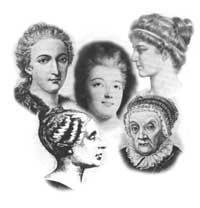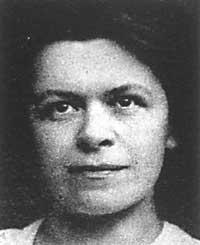Female intervention in science
2002/12/01 Mendiburu, Joana - Elhuyar Zientziaren Komunikazioa Iturria: Elhuyar aldizkaria
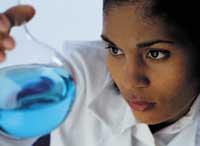
“If girls were sent to school and, as with boys, there was a habit of teaching science to girls, they would learn and understand perfectly the keys of all arts and sciences, like boys… because to do some things, although women have a more delicate body, weaker and more messy than men, they apply understanding… The time has come for women to write teachers in science and women to teach in science.
Christine de Pizan was the first to argue that women had the right to study. A century later, humanists Juan Luis Vives and Erasmus of Rotterdam also favored this idea because, although more than to defend women's rights, mothers could serve to educate children.
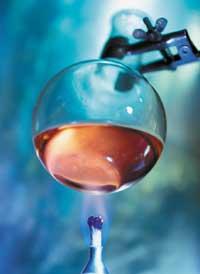
Among the names of the women who defended Christine's ideas in Beijing is Margaret Tyler, an English translator The Mirror of the Facts of Princes and Cavalry (1578) by Diego Ortúñez de Calahorra. In the book's foreword, she stated that women have the same research and writing capacity as men, and therefore have the right to it. Ten years later it was published in the book Boke his Surfeit in Love, the writer Jane Anger attacked and insulted women who thought they are less. In the same vein, the Spanish María de Zayas y Sotomayor (1590-1661 or 1662) attributed the reason that women are “less” to the lack of male compassion and declared that locking women and leaving them without a teacher is a tyranny.
In this environment, the upper-class women were approaching knowledge. XVII. At the time of the scientific revolution of the 20th century a new image was also created: scientific lady or the femme savante. Women's education became a point of western debate and proof of this is the literature of the time (see Femmes savantes or Les précieuses ridicules de Molière). In the debate, known as Querelle des femmes, women's clothing participated and, based on their experience, continued to claim the right to education.
Some women also had problems with the authorities. One of them was Madame de Châtelet. In 1749, with the passion of teaching physics to his 11-year-old son, he published the book Institutions de physique, without naming the author. With this book, XVIII. He proved to be an expert in 20th century physics, but Samuel Koenig, his teacher for a few months, claimed that “he has only copied some notes of the class,” claiming that the book was his own. The writers Voltaire and Maupertius favored Madame de Châtelet, but the king of Prussia believed Koenig and said the book was false.
Initiation and scientific outreach to women
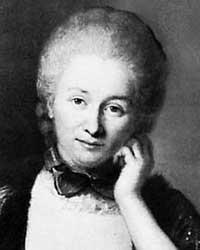
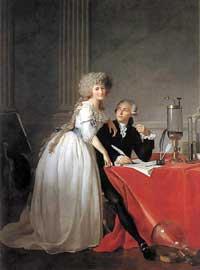
Despite learning difficulties, a little scrutinized in the official history of science can lead to more than one woman. However, official history has conveyed the idea that women who were able to hide solidarity among women and understand scientific issues have been rare.
Women were the first to master the chemical processes that could be included in bread production, food preparation and conservation, ceramics and fabric coloring. Also, although the authorities called them witches, women collected and classified medicinal herbs at the beginning of Western medicine.
Alchemy, far from the academic world, is a topic worked by women. Parascelso, considered the father of alchemy, affirmed this by recognizing that everything he knew had learned from witches. Founder of Alchemy and first to describe the methods and apparatus used by Mary the Jew (III. It was the 20th century). To him we owe the bath Mary.
Alchemy provided practical knowledge related to the production of medicines, cosmetics and soaps, using the methods, appliances and substances used by women in the kitchen. The operations described in the alchemist treaties were fusion, calcination, dissolution, filtration, crystalination, and distillation that had not been described until then.
Women who had the opportunity to learn, in addition, also engaged in scientific outreach, as they understood that knowledge should be in the hands of all, often written for women. Books such as La Chymie charitable et facile en faveur des dames (1666), by Marie Meurdrac, or Conversations on Chemistry (1805), published anonymously by Jane Marcet.
Some noteworthy names
By linking science with power and banning women from studying and researching, few names appear in the history of science, which have sometimes been left on the brink of the shadow of her husband or the men of the research groups and sometimes signed their works with male names.
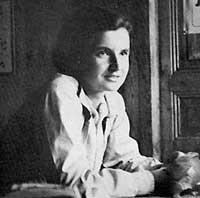
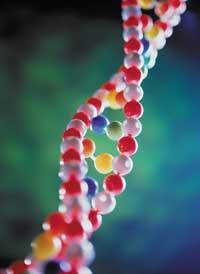
Theano (BC) is one of the best known of those left in the shade of her husband. VI. 19th century) was the wife of Pythagoras. Theano was a philosopher, mathematician and physician and, when Pythagoras died, led a college with the name of her husband. Unfortunately, all the research carried out was signed on behalf of Pythagoras, and it is almost impossible to identify the author of each research.
And who knows Marie Anne Paulze (1758-1836), Lavoisier's wife? Together with her husband, she set the beginnings of modern chemistry and published her works after guillotining Lavoisier in the French revolution. However, his work has been mentioned very little.
It also highlights the participation of Mileva Maric, first woman of Albert Einstein in the theory of relativity. Evan Harris, a physicist who has researched the letters written by Einstein and Maric, believes that in the articles published by Einstein in 1905, among which was the Nobel Prize in Physics in 1921, Marice could have participated more than expected so far.
In fact, in a 1901 letter Einstein wrote: "What happiness and pride we will have when we have the success of our work on the relative movement." There are ten other examples where Einstein talks about "our work" or "our collaboration." In addition, when they divorced, they agreed that Einstein would receive in the future the benefits of the prizes he could also win to his former wife, and so they did when in 1921 Einstein won the Nobel Prize. Although Magda Staudinger also developed in 1920 with her husband Hermann the concept of macromolecule and explained the mechanism of polymerization, the Nobel prize was awarded only to Hermann in 1953.
XX belittled by the members of the research team and left behind. One of the most prestigious scientists of the 20th century is Rosalind Franklin (1920-1958). He was a member of the quartet that found the structure of DNA. For this work, in 1962 three other comrades won the Nobel Prize than he did. Although Rosalin's participation was fundamental, it was despised, as his colleagues, especially Maurice Wilkins, considered him a collaborator. Rosalind Franklin's work allowed James Watson and his collaborator, Francis Crick, to find the helical structure of the DNA molecule, correcting the errors of Watson's research.
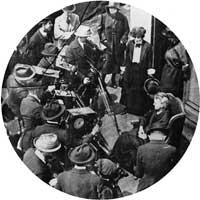
Other women have hidden their names behind male names. Salero trotulas, for example, XI. In the 19th century he wrote a treatise on female diseases ("Passionibus mulierum"), but in a 1566 publication Eros Juliae appeared with the name of man. Sophie Germain (1776-1831), mathematician M. He signed the works with the name of Le Blanc. However, in 1816 he won in his name the Grand Prix of the French Academy of Sciences for the explanation of vibrations of elastic surfaces.
Statistics of discrimination
XX. With the entry into the 21st century, the factors of the scarce female presence in scientific issues have been analyzed. Proof of this are statistical studies conducted in the United States since 1981 and Europe since 1999, taking into account gender.
Data from the United States are collected by the National Science Foundation and communicate with a certain frequency the number of science and technology positions occupied by women in Congress.
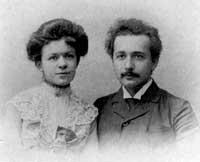
In Europe, at the request of the European Commission, in 1999 the report entitled "In the European Union: for the common good, promoting equality between men and women", known as ETAN, was presented. Thus, 30 representatives of EU countries, all of them women, created the Helsinki group.
In both the United States and Europe, the presence of women in science and technology remains weak. In the Spanish state, as in the rest of Europe, women represent 13% of technological baccalaureates and engineering studies, at best 25%.
According to the Helsinki Group report, gender discrimination is a feature of professional careers in science. In fact, in studies in which many students are women, as the academic hierarchy increases there are fewer women.
For example, women represent between 13% and 18% of university professors in countries where there is said to be little discrimination (Finland, France and Spain), while in the Netherlands, Germany and Denmark they are less than 6.5%.
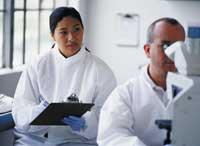
The percentage of professors or researchers is even more scandalous. In addition to universities, in other workplaces, women hold less than 10% of senior positions, although half of university graduates are women. According to Paloma Alcala Cotijo, an expert in science and gender, women spend an average of 16-20 years more than men to reach the maximum.
Moreover, since men occupy most of the top positions, they are the ones that are most cited in the media and society believes that scientific and technological research is the work of men.
But no wonder there are so few women in high office. In fact, according to a study published in the journal Nature in 1997, men were twice as likely to obtain a postdoctoral fellowship as women. It was revealed that evaluators, just because they were men, gave the advantage of twenty scientific publications to men.
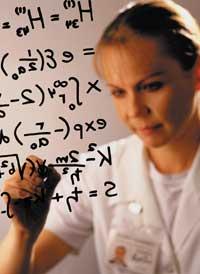
On the other hand, we must not forget that in many countries women still have no right to study, so it is impossible to break the imbalance.
Causes of this situation
Among the agents is the importance of political decisions and some social factors such as customs, both in the United States and in Europe.
The European report denounced that most research grants are aimed at single children, which closes the doors to research for all mothers. In addition, after a prolonged period of interruption, such as maternity leave, researchers have difficulty integrating into the work team.
However, integration difficulties do not occur only after a long time outside the work team. Nor do women easily enter informal discussion groups. The isolation and lack of solidarity they suffer is a consequence and at the same time the foundation of this weak representation, as published in the report.
Henriette Bolton wrote about women scientists in the journal Popular Science Monthly: “As a general rule, the woman of the sciences must be strong enough to stand for herself and be able to endure sarcasm, antipathy and often the injustice of men who feel jealous to see what they consider their scope of action invaded.”

Consequently, the European report stressed that science loses people with great capacity and that this imbalance hinders the approach of science to society. According to Commissioner Philippe Busquin, "the data show that the scientists are not enough represented in high-level positions. It is urgent to address the issue to improve the place and role of women in science and strengthen European research."
The Helsinki team divides the measures to be taken into two groups. On the one hand, it highlighted the need to promote and have more power to women in their professional career and, on the other, the need to encourage women's participation in education, decision-making spaces, labour policy and research policy processes.
In this sense, in the 5th Framework Programme of the European Union to be developed between 2002 and 2006, the European Commission wanted women's participation to be 40%. The goal was not fully met, but 4. A higher percentage was achieved than that of the program.
On the other hand, given the decline of students in scientific matters, special emphasis will be placed on the attraction of young people, especially girls, to scientific fields and on the limitation of the mobility factor in scientific study.
In addition, to be able to measure the female presence well, the Helsinki team has requested that gender be a mandatory data in all statistical data on science and technology.
PRIZE | FROM | Number of winners | Number of women awarded |
Nobel laureates: Prince of Asturias Research Prize for Physical Chemical Medicine gold medal CNRS France | 1901 1901 1901 1981 1954 | 168 178 37 | Other Languages |
Right to belong to universities and scientific academies
XIX. The second half of the 20th century was the second historical period of the claim to the right to female study. At this time, in addition to general knowledge, participation in higher education institutions, such as universities and academies, was vindicated and more than one strategy was worked for.
One of them was that of American women who donated money to create college or female laboratories. These women gave money to the centers they first listened to, then licensed and finally accepted the women for the doctorate.
In women's centers, for their part, they had very little material to learn science. Proof of this are the changes made by Mary Louise Foster in 1920, when she moved to the Residencia de Señoritas in Madrid. For the few young people studying pharmacy, in order to learn chemistry was more than just learning the textbook, he organized a laboratory and three chemistry courses: qualitative, quantitative analysis and advanced doctorate course.
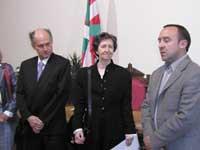
As for the universities, XIX. From the twentieth century the students were accepted one after another. Switzerland was the first to continue in the 1860s, followed by Great Britain and Italy (1870), France (1880), Germany (1900) and Spain (1910). Universities like Cambridge, however, maintained discrimination until 1947.
In most scientific academies, women were admitted as partners later than in universities, but not as sponsors. At the Berlin Academy, for example, it was created in 1700 under Prussian Queen Sofia Charlotte, but in 1964 it was named the first female member of Liselotte Welskopft. The Academy of Sciences of St. Petersburg was also created with the support of emperors Catherine I, Anne and Catherine the Great, but the XIX. Women were admitted at the end of the 20th century.
At the Royal British Institute, created in 1799, income depended on the number of members, so men and women were recognized. This allowed the elegant to attend institutional conferences.
Discrimination has prevailed in most other academies lacking such dependency. It was founded in 1666 at the French Academy of Science, where it was named its first woman, Yvonne Choquet-Bruhat, in 1979. Around 1740, Madame de Châtelet was secretary of the academy of the time. He had a scientific debate with Mairan, but was not appointed academic, M. Mairan refused to have a public debate with a woman on a scientific issue.
In Spain women were also admitted very late. At the Academy of Pharmacy, for example, Maria Cascales was named first woman in 1987. And the first woman to read the introductory lecture at the Royal Academy of Exact, Physical and Natural Sciences was Margarita Salas in 1988.
The Botanical Society of London, the Zoological Society and the Royal Entomolgian Society, founded between 1827 and 1833, have been one of the few academies that since its foundation have accepted women.

Gai honi buruzko eduki gehiago
Elhuyarrek garatutako teknologia




